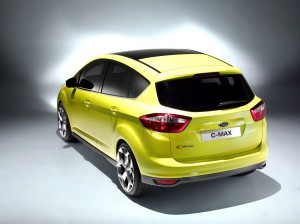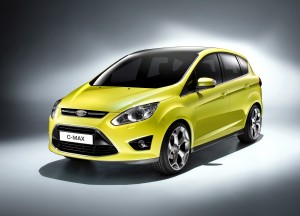The original Ford European Turnaround Plan earlier in the decade involved building on the success of the Focus as the over due replacement for an aging Escort. Focus was and is a global success.
Encouraged that Ford could finally stop its billion dollar losses and declining market share in Europe, the company set out to address other growing segments it had also missed. It needed to update its aging powertrain offerings as well.
Four gaping holes in the line were causing the sales slide.
Ford had completely ignored the Renault Megane Scenic in 1996 and the trend it set for C-class minivans (multi-activity vehicles in marketing jargon) that pointed the way for a whole generation of competitive products. Slow reacting, Ford took almost an entire product cycle to come up with the C-Max response.
It also ignored the European switch to high pressure common-rail diesel engines going on at the same time, since it did not want to spend the money for tooling, and it’s alleged, American management after Ford 200o despised diesels. Ford Motor Company, emphasis Motor, eventually was, eventually, forced to go outside for engineering expertise.
Then it missed the small Renault Kangoo and Citroen Berlingo panel vans that were trendy with kids and successful with small merchants, This gaff was finally addressed with the Transit Connect a decade later, only now going on sale in the U.S.
In addition, it let the Fiesta B-car languish just as the European market moved down a segment in taste and purse, as other makers thrived with more derivatives than Starbucks has coffee flavors.
All these problems have since been addressed, more or less successfully, and freshened second generations of the comeback lineup are out or about to appear. Still, the decade had a devastating effect on company reputation and market share — once 35% in the United Kingdom. Across Europe, share is just under 10%, the highest it has been in memory.
This brings us back to the C-Max. Though late and initially without a competitive diesel engine, the C-Max plugged one hole. Along with the second generation Focus and the revised Fiesta from Mazda, Ford finally stopped losing market share. Now comes a Gen Two C-Max using the same bolder, more rounded, more expressive styling that has appeared recently, which is a complete reversal of the J Mays plain “Braun Coffee maker” design of the first generation of European turn around products.

The "semi-automatic" parallel parking and blind-spot detection are nice, no doubt optional, touches.
No real surprise here – good or bad – since C-Max takes its design cues from the iosis MAX (sic) concept car unveiled at this year’s Geneva Motor Show. Rounded, sculpted and with a higher beltline, C-Max will fit right in with the latest Fiesta or Focus in the showroom.
C-Max also has an all-new 1.6-liter “EcoBoost” direct-injection gasoline engine, so it is finally catching up to the latest engine technology in what seems to be Ford’s perennial powertrain catch-up game. First, it lags in diesels; fixes them. Then it misses the technology changes in gasoline engines; has to chase the competition there. Then transmissions are missing additional gears others are offering… See a pattern?
The Ford C-MAX will be launched in the second half of 2010. It’s the first in a new generation of global vehicles developed from Ford’s C platform, scheduled for introduction over the next several years. The will include the freshened Ford Focus coming in late 2010. That one will, eventually, make it to the U.S. where the Gen One Focus is, believe it or not, still on sale.

